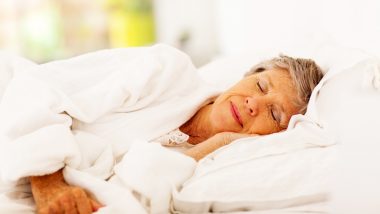While it is true that retirement communities have many benefits, over three quarters of seniors questioned say they prefer to remain in their own homes as long as they can. Getting around the home safely can be challenging for seniors who may be experiencing health issues or poor eyesight. However, there are many options available to help our elders navigate their homes and enjoy doing so. Below are five easily affordable things every senior should have in their home.
Adaptive Devices for Daily Living
For elders who suffer from stiff joints and balance issues, even the simplest movements can be wrought with struggle. Luckily, there are many handy gadgets to help people with the activities of everyday life. Reaching devices allow one to grasp an item from a high shelf, reducing the need to climb on a stepladder. Shoe horns are terrific for helping people with a restricted range of motion slip their shoes on. Ergo-dynamically designed kitchen tools such electric can openers, specially designed cookware and adaptive kitchen utensils allow those with limited strength to maintain independence in the kitchen. Lever-styled hardware replacing doorknobs and faucet handles help make life better for those with painful hands and wrists.
Nonskid Rugs and Slip-resistant Floors
One out of three adults over the age of 65 slip and fall every year. Of these falls, approximately twenty five percent result in moderate to serious injury. If it is not economically feasible to replace the flooring in a home, anti-skid floor coatings are available for a variety of slippery floor surfaces. Non-skid mats are essential to have beneath area rugs to keep them from slipping out from under people. Thresholds are easy to trip over and should be eliminated or lowered wherever possible. For those who use walkers to get around, a low-pile carpet is much easier to navigate than one with a deep pile, which walkers tend to get caught up in.
Handrails and Grab Bars
Many falls can be prevented by the use of sturdy handrails throughout the home. Handrails provide extra support and stability to those who have a hard time getting around. Installing handrails down hallways, ramps, and steps can help seniors maintain their balance by giving them something to hold onto when they need it the most. Speaking of stairs, clearly defining each step to show the edge of the tread can go a long way to reduce falls.
Proper Illumination and Visual Aids
A dark corner, hallway, or room invites bumps and falls, so adequate lighting is essential in all areas of the home. Seniors tend to awaken late in the night, so it is helpful to install automatic nightlights in the hallway and the bathroom. Other visual aids, such as a telephone with large numbers that are illuminated at night, can be very useful to someone who has a hard time seeing.
Assistive Devices for the Bathroom
When range of motion is compromised for any reason, daily bathroom activities become far more difficult. Grab handles, anti-slip flooring and non-skid mats placed inside and outside of the tub or shower are essential to senior safety. Bath benches and shower chairs provide support while bathing, and a long-handled bath brush helps seniors wash their back, legs, and other parts of the body that can become difficult to reach.
Home medical care is often needed for those with health challenges. Finding the parts and pieces to complete your home care medical kits should be easy. Red Cell Medical Supply offer a variety medical parts and pieces you need to complete your kits, in the exact number that you need.
